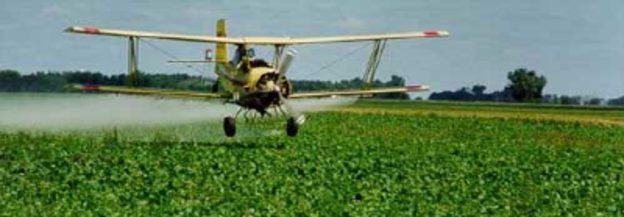
For both aerial & ground spray applications
Drift Control Agent
Superior drift control for about 30 cents per acre ($.66/ hectare)
Airex DC™ is a liquid co-polymer with ammonium sulfate and is proven to be highly effective in controlling spray-drift. It can be successfully used for control of spray-drift in aerial or ground spray applications of water emulsifiable pesticides, herbicides and plant growth regulators (PGR).
The properties of Airex DC™ allows the application of chemicals to be uniform without particle or vapor drift by increasing both the weight and size of the droplet, which reduces off target movement. Acting as an adjuvant it also enhances the performance of applied chemicals and reduces evaporation; wash off.
HOW Airex DC™ WORKS
- Airex DC™ reduces spray drift by materially reducing the spray fines normally generated by nozzle and wind shear.
- The use of Airex DC™ with other chemicals allows for spraying in moderately windy conditions without effecting the efficiency of the applied chemicals.
- As an adjuvant Airex DC™ reduces the overall surface tension and enables applied products to be absorbed and spread more evenly.
- The ammonium sulfate, as a nitrogen source enhances the efficacy of applied chemicals and allows the chemicals to be absorbed more rapidly.
- By irrigating immediately after an application, Airex DC™ becomes a penetrant that enhances the uptake of selective and non-selective components through the cuticle layer of the target species, or by penetrating compacted surface layers of the soil in target root zones.
Problems associated with drift
The movement of crop protection materials away from their intended target poses several possible problems. Besides the economic damage to nearby susceptible crops possible problems include less effective product control; i.e. airborne contamination of streams and lakes. Also the social and financial costs resulting from the accidental damage that drift can cause to neighboring ornamental or commercial plants.
Drift can be classified broadly into two categories: vapor drift and particle drift. The more common problem is particle drift, which occurs when small droplets are blown off-target by the prevailing wind. Damage to non target susceptible vegetation from vapor drift is a less common problem, but can have devastating effects on areas remote from the application site.
Particle drift is the most recognized type of drift. Although drift cannot be eliminated entirely particle drift can be reduced to very low levels through proper nozzle selection, equipment operation and the use of Airex DC™. The encapsulation of water molecules by the polymeric formula of Airex DC™ increases the relative droplet size (VMD) and weight, resulting in increased accuracy to the targeted area.

